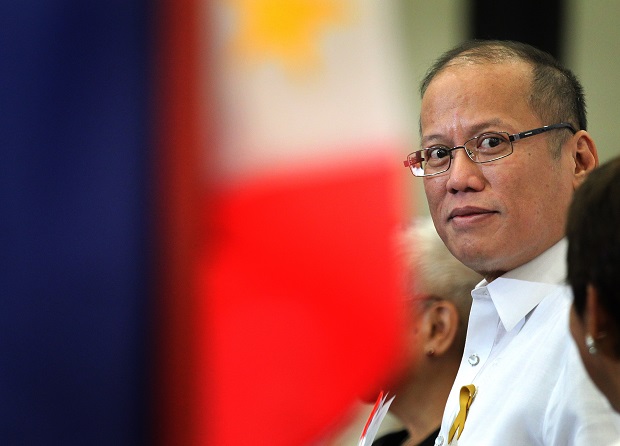4 minutes for Aquino climate speech at UN
MANILA, Philippines–It will take all of four minutes but it will be a speech that aims to tell the world the need to step up collective action to address climate change.
President Aquino will be one of the world leaders to speak at the United Nations Climate Change Summit on Sept. 23, a high level push led by UN Secretary Ban Ki-moon to reach a consensus among nations at the 2015 UN Climate Change Conference in Paris on cutting greenhouse gases.
Also expected to attend the summit are US President Barack Obama, and leaders from China, India and Brazil, among others.
Aquino leaves on Sept. 13 for a five-nation trip to Europe and the United States. He is to meet with leaders of Spain, Belgium, France and Germany in a bid to drum up support for the Philippines in its territorial dispute with China before proceeding to New York.
The Philippines’ experience with Super Typhoon “Yolanda” (international name: Haiyan) manifested “what the impact of climate change would look like,” Climate Change Commission Secretary Mary Ann Lucille Sering told the Inquirer in an interview yesterday.
The Philippines is getting “the raw end of the deal” because while it is not a major emitter of greenhouse gases, typhoons in the country are getting more frequent due to climate change, Sering said.
But President Aquino will face the United Nations not so much with the Philippines as a case study for climate change, but more so, to show the world that “we refuse to be defined by our sufferings but we want to be defined by how well we actually recovered.”
Sering said Aquino’s speech would take four minutes.
“But (we would be) showing the world we are trying to do the best we can under the circumstances, (that) we are very progressive in our policies and we are trying to be a team player on the world stage to meet what science requires but obviously based on fairness and the principle of equity considering that we are not a major emitter and we need more support, essentially in technology,” she said.
“So what we want the President to say on the world stage is that we are taking steps nonetheless in a small little way to contribute to the common but different responsibility depending what the circumstance of each country can do,” Sering added.
PH programs
The Philippines has been pushing for programs in the country that seek to address climate change. These include the Renewable Energy Law passed in 2008, the bus rapid transport which adopts the use of electric vehicles, and the Energy Efficiency Bill pending before Congress.
Sering added that the Philippines was among the first countries in Southeast Asia to have windmills as a source of energy and a People Survival Source Fund Board, a specialized funding for local governments to access technical support for renewable energy.
With winds at more than 300 kilometers per hour, Yolanda slammed across the Visayan region on Nov. 8 last year. The strongest typhoon to ever make landfall, Yolanda killed more than 6,000 people. Over 2,000 remain missing.
Rehabilitation and recovery efforts remain underway. While the government said much progress had been made in rebuilding the flattened provinces and towns, most of the victims are dissatisfied, saying that life had barely returned to normal.
Preview of new protocols
The fiercer typhoons from the Pacific are concrete examples of global warming that is one of the results of unabated gas results in climate change.
While not part of the negotiations to come up with a new agreement to replace the Kyoto Protocol, the UN Climate Change Summit is important because “it gives you an idea of the direction on what the agreement will look like [in] 2015,” based on what the global leaders would declare at the summit, Sering said.
“This, I would say, is an attempt to salvage what we failed to achieve in 2009 in Copenhagen,” Sering said.
The 2009 Copenhagen Climate Change Conference failed to come up with commitments from nations to cut their greenhouse gas emissions to a safe level, although it came up with an accord that acknowledged that there was a need to keep the global temperature from rising to no more than 2 degrees Celsius.
Sering said the global temperature is now at nearly .8 degrees Celsius.
The Kyoto Protocol, which set an internationally binding emission reduction targets, was adopted in 1997 and its first commitment period began in 2008 and ended in 2012.
A second commitment period was supposed to have taken place from Jan. 1, 2013 to Dec. 31, 2020.















